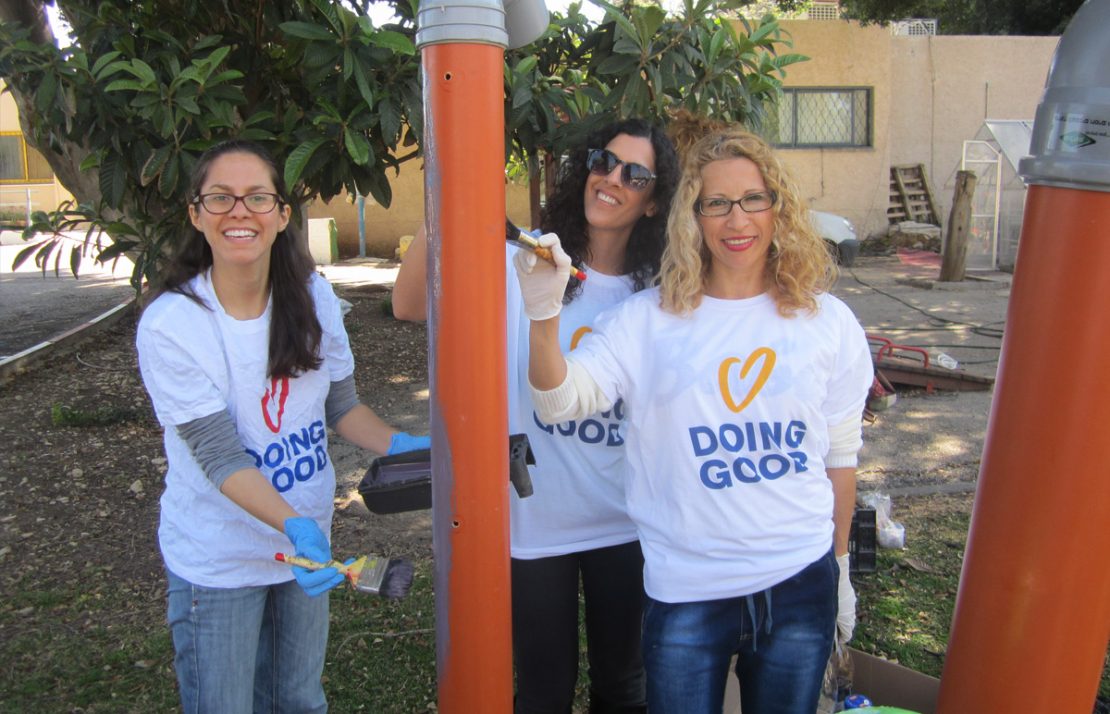
Today, nearly 120,000 organizations are looking for volunteers on VolunteerMatch. With more than seven million volunteers registered, the good news there’s plenty of talent to go around.
Before you post a volunteer opportunity, however, it’s important to identify your department or program’s needs. Once you do, it’s time to write your volunteer opportunity, or appeal. Think of this as your organization’s cover letter.
A good volunteer opportunity title and description lead prospective volunteers to want to learn more about your organization, culture, mission, and role. If flexed correctly, an exceptionally-written opportunity will attract the perfect volunteer fit.
Check out these tips for writing a compelling volunteer opportunity.

Know Your Audience
People volunteer for a number of reasons. Before you begin writing, understand your who your ideal volunteer would be—what might their motivations or intentions look like? Start with your goals and work backward. For example, if a position requires website design or coding experience, you’ll want to hire volunteers who are proficient in those skills.
According to Nonprofit Marketing: Marketing Management for Charitable Organizations, volunteer opportunity descriptions develop realistic expectations and reduce volunteer turnover from dissatisfaction. If you have a team of current volunteers, talk to them about their roles: how do they describe the work they do? Then, incorporate their feedback into your opportunity description.
Pro tip: An accurate volunteer persona can help you write an appeal with your target audience in mind.

Make It About Them
You may already know to mention how this role will impact your mission or organization, but it’s just as compelling to include how it might benefit your volunteers, too.
Whether by improving their physical health and self-esteem or helping them learn new skills, there are plenty of benefits you’ll want to highlight as long as they’re relevant to your role.
Most applicants are looking for transformative opportunities, so your appeal should clearly illustrate the difference volunteers create. Learn how to tell the story of your volunteers’ impact, then include a brief story—or links to a few—in your volunteer opportunity.
You can also demonstrate how a challenge or issue affects a group you serve, then how volunteer work can bridge that gap. The language here should be compelling, concise, and persuasive.

Invite Collaboration, Excitement
Founder of Inbound Zombie, John Haydon, once said “Don’t ask people to ‘donate’. Instead, ask them to ‘join’, ‘build’, etc. Appeal to identity and emotion, not wallets.” While John may have been referring specifically to fundraising, this quote applies to volunteer recruitment as well.
Livia Susan of Lifesaveressays, a business and essay writing service adds, “a great piece of writing has the potential to touch the soul of the readers and can instantly make them feel your thoughts instead of merely understanding your words.” When you give volunteers the freedom to come up with new and creative solutions, they feel like they’re part of the difference. If your organization fosters a culture of collaboration, be sure to include that!
Your volunteer opportunity title and description should appeal to the ethos, pathos, and logos—or ethics, empathy, and logic—of your readers. When you give volunteers the freedom to come up with new and creative solutions, they feel like they’re part of the difference.
If your organization fosters a culture of collaboration, be sure to include that!

Keep It Light, Brief, and Straightforward
A well-written volunteer opportunity title and description let volunteers know exactly what’s expected of them. Use short, succinct sentences to address the responsibilities of the role and clearly outline expectations. Avoid lengthy paragraphs with needlessly professional jargon, and limit your opportunity to 100 words or less.
Your title should follow similar guidelines while being actionable and reflective of your volunteer’s persona. Catchy headlines go a long way. For example, “Bring your friends”, “Mentor a child in your community,” or “Let’s build together” all sound better and more creative than “Volunteers needed!”.
Test your recruitment efforts among a group of people similar to those you’re targeting (family and friends work, too!). A/B test a couple of different variants then elicit candid feedback. Most importantly: proofread, proofread, proofread! Volunteer opportunities with grammatical or spelling errors are less likely to garner interest from volunteers. Proofreading is the simplest way to dodge this avoidable mistake.
It sounds simple enough, but many forget this essential step. Think of it this way: for volunteers, your volunteer opportunity is an introduction to your organization. Misspelled words and grammatical errors give the impression of unprofessionalism and denote a lack of attention to detail.
Always check your work before posting! If you’re looking for a safety net, helpful software such as Grammarly could monitor your grammar and spelling from falling through the cracks.
Use these tips to help you create engaging volunteer opportunities for your organization. Get started today on VolunteerMatch today! Then, boost your recruitment efforts by learning about our Member tools.
There are many other effective tips you can follow. A comprehensive blog atInstructional Solutions recommends you should write to express not impress, stick to seven sentences or less, maintain readability, use staccato short words to create impact, leverage active voice over passive, verbs to avoid, and more.
This article was originally published on VolunteerMatch: Engaging Volunteers and appears here with permission.




